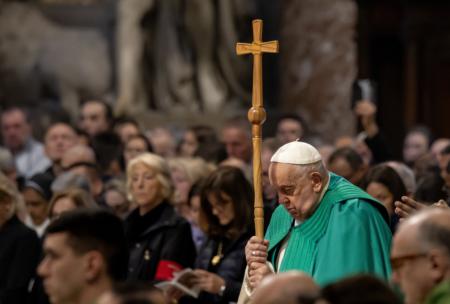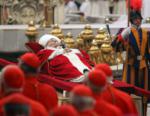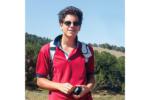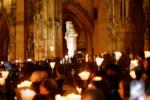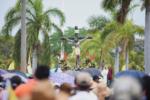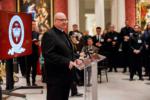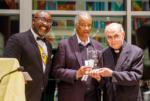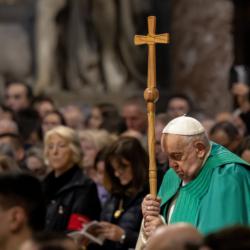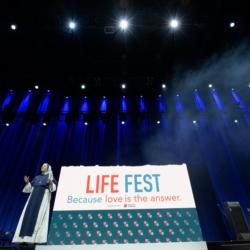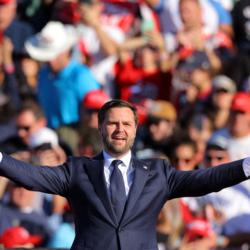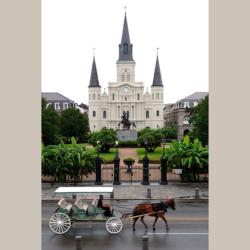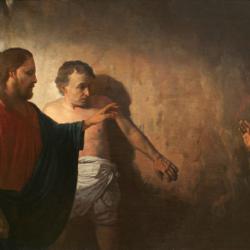St. John's Seminary marks 140 years with MFA gala
BOSTON -- "Do you know him?" Archbishop Richard Henning asked Bishop Cristiano Barbosa as they observed the room at the 140th anniversary gala for St. John's Seminary on Nov. 14.
"I think he teaches at Providence College," the archbishop joked.
"He" was Fray Hortensio Felix Paravacino, a 16th-century Spanish friar immortalized in a portrait by El Greco. The gala took place at the Museum of Fine Arts in Boston, where the hundreds of seminarians, priests, bishops, and donors who attended were surrounded and towered over by monumental paintings. Bearing such notable names as Rubens, Veronese, Velazquez, and Tintoretto, the works depicted Christ, saints, and biblical scenes on an epic scale. The archbishop and Bishop Barbosa craned their necks to peer up at the masterpieces that dotted the walls of the grand William I. Koch Gallery. One seminarian questioned why David was carrying a leopard-skin purse as he posed with the head of Goliath. Seminarian Alden Bronson played cello at the gala, under the beatific gaze of Mary in a 17th-century Spanish painting of the Immaculate Conception.
"This magnificent venue underscores our commitment to the integration of faith, art, and culture in our society," Deacon Brian Daley, a fourth-year seminarian who served as the gala's master of ceremonies, said in his remarks.
Deacon Daley said that art, in the form of paintings, sculptures, music, ritual, and liturgy, has a way of expressing what mere words cannot.
"We need our words, we need our theology, we need our studies," he said. "But ultimately, the Word is a person, and that person is God's greatest work of art."
He described his priestly formation at SJS as holistic, addressing the academic, pastoral, spiritual, and human needs of seminarians.
"We're more than just a collection of individuals pursuing a vocation," he said. "We're a family, and we're all together, united in purpose and faith."
Prior to entering the seminary, Deacon Daley studied at the Massachusetts Maritime Academy and worked overseas.
"I was very proud of that collection of experiences," he said. "But it was in the context of vocation and mission that those experiences all began to make sense in the lens of divine providence, and everything ultimately comes down to a relationship with Jesus Christ. And that's really what the seminary, I can clearly say, is all about."
He said that he discovered his identity at the seminary.
"I've never felt like I couldn't relate anything that was going on in my heart to anybody at St. John's," he said, "and that's a testament to not just the mission of St. John's but to the faculty themselves."
In his remarks, SJS Rector Msgr. Stephen Salocks thanked Patrick Folan and his family. Their company, Folan Waterproofing, is currently restoring the aging masonry of the seminary's campus in Brighton. Msgr. Salocks has been involved with the seminary for over a third of its history. He entered SJS in 1975, when it was "only 91 years young," he joked. St. Paul VI was pope, and Cardinal Humberto Medeiros was Archbishop of Boston.
"Little did I realize I would spend most of my adult life there," he said, "and I would be studying and working and preaching and praying, enjoying it all very much."
Msgr. Salocks previously worked as a chemist for the U.S. Army, a job which brought him to Natick Laboratories.
"It was the United States Army and the Holy Spirit that transferred me to Massachusetts," he said.
On his first night at the seminary, chanting the psalms with 100 other men in the chapel, he knew that this was where he belonged. After being ordained a priest, he served in St. Michael Parish in Hudson. Then-Auxiliary Bishop Al Hughes asked Msgr. Salocks if he wanted to go to Rome to study Scripture. He did, and he returned to SJS to teach the New Testament in 1987.
"For more than 30 years, my time at the seminary has been my own ongoing priestly formation and growth as I worked and learned from my fellow faculty, my students, and also, for the past six years and a half as rector, from the seminary staff."
The evening's guests of honor were Archbishop Henning and Cardinal Seán P. O'Malley. The cardinal remarked on his time as an apostolic visitor, visiting 130 seminaries in Latin America to report on their inner workings. After that experience, he said, he could say with confidence that SJS is one of the best seminaries in the world.
"All of us as Catholics can talk about the priests in our lives," he said, "the parish priests and the religious priests that accompanied us in so many important moments of our own life, the life of our family, the sacraments. In moments of great joy, in moments of tragedy, our priests have been with us."
However, he said, "these priests don't come in on spaceships."
"If it takes a village to raise a child, it takes a community of faith to raise up a priest," he said. "And we are so blessed to have a great seminary here, and it exists because of the sacrifices of so many people."
Cardinal O'Malley remembered when he entered the seminary 60 years ago. Back then, a young man joining the priesthood would be greeted with praise and encouragement.
"Those days are gone," he said. "The choice to come to the seminary is often a very countercultural decision and does not always receive an enthusiastic response, even from a man's family and close friends."
Therefore, he said, Catholics must be willing to support seminaries and the men entering them, both financially and with their prayers.
"I know that so many people have made great sacrifices, but the sacrifices have been blessed by the fruits that the Lord has given us," he said.
Archbishop Henning began his remarks with the words spoken at every Mass: "This is my body given for you, my blood poured out for you."
"It is the great privilege of priests to be the ones to say these words in the celebration of the Eucharist," he said.
He pointed out that when priests say those words, they say "my body, my blood," not "his body, his blood" to refer to Christ's sacrifice. As St. Paul taught, Christian disciples must make themselves into that sacrifice.
"This is a tall order, is it not?" The archbishop said. "For the priest to be the one who stands at the heart of the church and speaks these words of the Lord. If you're going to do that and do that authentically, then you need time. Time to be formed, to be drawn closer to the heart of Christ."
He noted that even St. Paul needed three years of formation after his conversion.
"The seminary, a good seminary, becomes that place where the seminarian is shaped and transformed by the grace of God," he said, "to prepare him so that when he stands in the heart of the church and speaks those words, they have an authenticity. That he has been immersed in the spiritual life. That he has opened his heart in prayer. That he has allowed the church to hand to him her tradition."
He said that, on the night of the gala, he had been Archbishop of Boston for only two weeks. However, in his previous role as bishop of Providence, he interviewed "scores of priests" about their time as seminarians. More than half of them were SJS alumni.
"Every single priest that I spoke to who was an alumnus of this seminary told me that it was an excellent experience and that it had prepared them for the life of a priest and for work in a parish," he said.
He then visited the parishes where those priests ministered and saw them putting what they had learned to good use.
"I can say with great authority, even though I'm just here two weeks, that this seminary forms men and forms them well after the heart of Jesus Christ the Good Shepherd," he said.
He expressed his gratitude to the staff and supporters of the seminary.
"We need good priests, do we not?" He said. "We need that presence of Jesus Christ. They help us to become his body and offer ourselves to the Heavenly Father. So, thank you, God bless you, and God bless St. John's Seminary."
